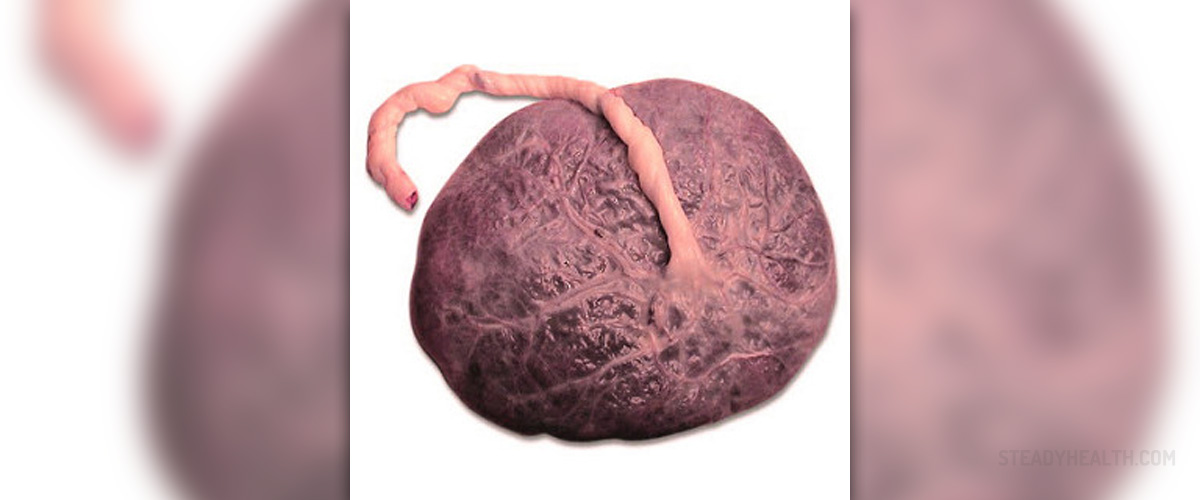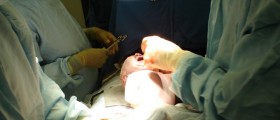
The delivery of the placenta is medically termed "the third stage of labor". When it happened naturally, physiologically, this can happen anywhere from immediately after birth to a few hours afterward. The birth of the placenta is sometimes accompanied by a few mild contractions, or sometimes it just comes out. When the placenta detaches from the uterine wall, a gush of blood will be released and the uterus will become hard to the touch. Depending on the mother's healthcare providers, the birth of the placenta may proceed naturally or be medically managed.
In the case of an actively managed third stage of labor, the drug Pitocin is usually administered. That is the same medication that is also used to induce labor, and it helps the placenta deliver more quickly. Some hospitals have a definite policy on the third stage, giving the placenta a certain amount of time to come out by itself before medication is introduced. This can vary from ten minutes to an hour. Concerned over a "retained placenta" and postpartum hemorrhage usually prompt an actively managed delivery of the placenta.
Oftentimes, the midwifery model of care prefers to opt for the natural delivery of the placenta. Maternal movement and breastfeeding the newborn baby may speed up the birth of this organ. In most cases, the placenta will come out spontaneously without problems within an hour after the birth. If you have questions about how your labor and delivery team will handle the third stage, it is a good topic to put on your list of questions for a prenatal appointment! You might want to read about the symptoms of placental abruption to get an idea of what can happen if the placenta detaches prematurely, before the baby is born.














Your thoughts on this
Loading...